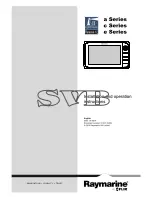
6. Quality
Control
2021-07
Instructions for Use for SUNRISE No. 30086638 Rev. No. 2.9
53
3. When very accurate results are required, ensure the
Accurate
measurement
mode is used.
Microplates
1. The instrument can be used with those types of microplates which are
described in the specifications in chapter 2.3.7 Microplates. The best results
are obtained when clear flat-bottom microplates are used.
Depending on the type of microplate being used, the measurement result may
vary.
Take care especially when using round bottom plates or the strip frames
because it is possible that the measurement results might differ slightly
to what is described in the specifications.
Make sure that the type of microplate used with the SUNRISE Microplate
Absorbance Reader is suitable for the respective application.
2. Use only perfectly clean microplates.
3. Do not allow dust to settle onto the solutions or the microplate, if the
microplate is left to stand for a time before the measurement.
It is recommended to use a cover for protection.
4. Inaccuracies in the amount of solution pipetted has a greater effect on the
results obtained, when small amounts of solutions are used.
It is recommended that a minimum of 200 ml is used in each well.
5. The form of the meniscus of the solution can cause inaccuracies in the results,
particularly if small amounts of solution are used (see 6.3.3 High Meniscus
Liquids).
CAUTION
MAKE SURE THE SUITABILITY OF THE MICROPLATE USED IN
COMBINATION WITH THE AMOUNT OF SOLUTION, MENISCUS
PROPERTIES AND THE MEASUREMENT MODE IS APPROPRIATE
FOR THE CURRENT APPLICATION.
6.2.3
Self-Check Procedure
Before each microplate is measured, the self-check calibration procedure is
performed to ensure that the instrument is working correctly and to calibrate the
optical system.
When the self-check procedure starts, a digital value for each measurement
channel is taken without the lamp and with the lamp on, using each of the
selected measurement filters.
A calibration curve for each measurement channel is calculated.











































